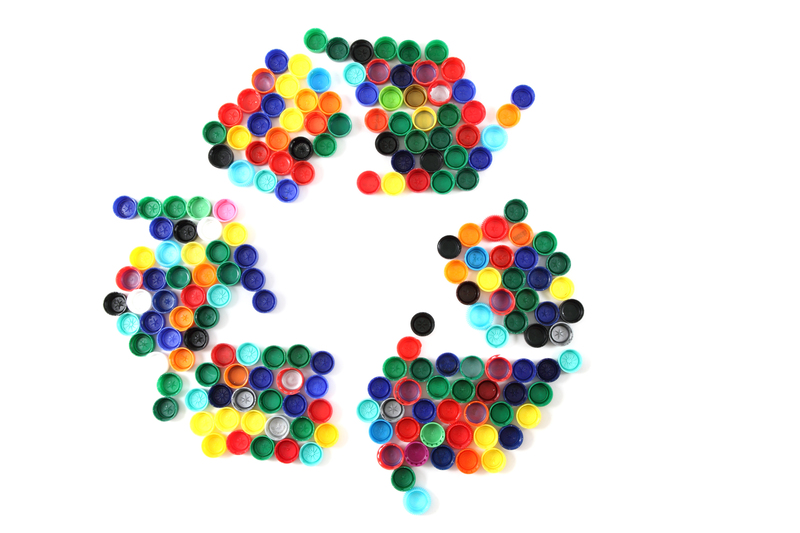Effective Ways to Slash Your Plastic Consumption
Plastic has shaped our modern world with its convenience and versatility, yet its omnipresence has become a severe environmental threat. Today, the average person is surrounded by plastic in almost every aspect of life--from packaging to clothing and even hygiene products. Reducing plastic consumption is crucial for protecting our planet and ensuring a sustainable future. This comprehensive guide will explore the most effective ways to slash your plastic use and transform everyday habits for the better.
Understanding the Impact of Plastic Pollution
Before diving into the actionable strategies, it's vital to grasp why reducing plastic usage matters. Plastics, especially single-use plastics, take hundreds to thousands of years to decompose. According to recent studies, more than 8 million tons of plastic end up in our oceans every year, harming marine life and entering the food chain. By finding effective methods to cut plastic consumption, we create a ripple effect that benefits wildlife, public health, and the overall environment.

Practical Strategies to Reduce Your Plastic Footprint
1. Embrace Reusable Alternatives
One of the most straightforward approaches to slashing plastic waste is to shift from single-use items to reusable substitutes. Start by focusing on daily essentials:
- Shopping Bags: Carry cloth or jute bags when you shop. Reusable bags are durable, often more spacious, and help reduce the number of plastic bags in circulation.
- Water Bottles: Switch to stainless steel or glass bottles. Not only do they keep beverages cooler, but they also eliminate the need for disposable plastic bottles.
- Food Containers: Use glass, steel, or silicone containers for storing food at home or carrying lunch. These are more hygienic and environmentally friendly than plastic counterparts.
- Coffee Cups: Always have a reusable cup or thermos for takeout coffee. Many cafes now offer discounts for customers who bring their own cups!
2. Shop Smart and Choose Plastic-Free Packaging
Being a conscious consumer plays a significant role in reducing plastic consumption. Here's how you can make smarter choices:
- Bulk Buying: Purchase items in bulk, both to save money and cut down on unnecessary packaging.
- Fresh Produce: Opt for fresh fruits and veggies over pre-packaged ones. Bring your own produce bags or simply place items loose in your basket.
- Look for Alternatives: Select products packaged in cardboard, glass, or metal over plastic. Many companies now offer biodegradable or compostable packaging.
- Support Local: Shopping at farmers' markets or local grocers often means fewer plastic-wrapped goods and supports small businesses.
3. Adopt a Zero-Waste Mindset at Home
Transforming your household routines can drastically reduce reliance on plastics. Adopting a zero-waste lifestyle may seem daunting, but even incremental changes matter:
- DIY Cleaning Products: Make your own household cleaners using vinegar, baking soda, and essential oils, stored in reusable glass bottles.
- Bulk Stores: Fill up on rice, pasta, grains, and detergents at zero-waste shops using your own containers.
- Composting: Composting organic waste not only reduces trash but also minimizes the need for plastic-lined garbage bags.
- Reusable Cloths: Swap paper towels and plastic-based sponges for washable rags and loofahs.
Everyday Habits to Minimize Plastic Use
4. Rethink Your Personal Care Routine
Did you know that personal care products are rife with hidden plastics? From microbeads in face scrubs to plastic packaging, your bathroom can be a major source of plastic waste. Effective strategies include:
- Bar Soap & Shampoo: Replace bottled soap and shampoo with bars wrapped in paper or without packaging.
- Bamboo Toothbrushes: Choose bamboo or biodegradable handles instead of traditional plastic ones.
- Refillable Products: Search for stores that allow refills for liquid soaps, shampoos, and cleaners.
- Menstrual Products: Consider menstrual cups, cloth pads, or period underwear as eco-friendly alternatives to disposable options.
5. Say No to Single-Use Plastics (Whenever Possible)
Single-use plastics are a key driver of pollution. Taking a stand means staying proactive and prepared:
- Straws: Decline plastic straws in restaurants and carry your own metal or bamboo straw.
- Cutlery: Carry a lightweight set of reusable cutlery in your bag for meals on-the-go.
- Takeout Containers: Politely request restaurants to use your own containers or choose eateries that offer sustainable packaging.
- Party Decor & Balloons: Opt for biodegradable decorations and skip balloons at celebrations.
6. Make Conscious Fashion and Textile Decisions
Clothing is often overlooked when discussing plastic waste. Modern fabrics like polyester and nylon are forms of plastic that shed microfibers into waterways:
- Natural Fibers: Choose garments made from cotton, linen, hemp, or wool.
- Secondhand Shopping: Buy clothes from thrift stores to extend the lifecycle of clothing and reduce demand for new, plastic-based apparel.
- Repair Instead of Replace: Mend clothes rather than discarding them at the first sign of wear.
- Use Guppyfriend Bags: For synthetic items, use specialized laundry bags that trap microplastics, thus protecting waterways.
Engage Your Community and Advocate for Change
7. Elevate Your Plastic-Free Commitment Beyond the Home
Individual efforts are incredibly important, but we can create larger impact by joining forces with others:
- Community Clean-ups: Participate in or organize neighborhood plastic clean-up events.
- Share Your Knowledge: Educate friends, family, and colleagues about reducing plastic consumption and its benefits.
- Support Policy Change: Advocate for bans on single-use plastics and support local governments pushing for sustainable initiatives.
- Choose Eco-friendly Brands: Support companies with transparent, eco-conscious practices.
8. Balance Technology and Convenience
Technology can be both a culprit and a solution in the context of plastic waste:
- Digital Receipts: When possible, opt for electronic bills and receipts to avoid plastic-coated paper slips.
- Sustainable Delivery Services: Choose grocery or meal services that prioritize reusable or compostable packaging.
- Tap-to-Pay: Many bank cards are plastic, but digital payment can minimize need for new plastic cards over time.
Creative Solutions to Cut Down on Plastic Usage
9. DIY Craft and Upcycling Projects
Instead of discarding the plastic you cannot avoid, get creative! Upcycling can give single-use plastics new life:
- Planters: Transform old plastic bottles into herb planters.
- Organizers: Cut and decorate containers for desktop organizers or kids' craft bins.
- Eco-Bricks: Stuff single-use plastics into bottles to make "eco-bricks" for DIY building projects.
10. Stay Updated on Innovations and Alternatives
Stay educated about emerging sustainable materials and support products made from them:
- Bioplastics: Seek out items made from plant-based "plastics", but research their compostability and safety first.
- Edible Cutlery: Explore cutlery made from pressed grains, which can be eaten or composted after use.
- Starch-based Bags: Look for bags made from corn or potato starch, which break down much faster than traditional plastics.
Overcoming Barriers: Tips for Sticking with Plastic Reduction
11. Set Manageable Goals
Cutting plastic waste is a journey. Focus on progress, not perfection:
- Track Your Progress: Keep a log of plastic items you refused, reduced, or replaced.
- Set Weekly Challenges: Try focusing on a different area each week--such as bathroom, kitchen, or shopping habits.
- Celebrate Milestones: Reward yourself when you reach small goals.
12. Get the Whole Household Involved
Lasting change is easier when everyone is on board. Educate your children about plastic pollution, assign tasks, and make it a fun family challenge.
13. Don't Fall for Greenwashing
Many products are marketed as "eco-friendly" but may only offer marginal benefits. Learn to read labels critically and seek third-party certifications like Biodegradable Products Institute (BPI) or Cradle to Cradle Certified.

The Lasting Impact of Reducing Plastic Consumption
Slashing your plastic use isn't just about saving a turtle or a dolphin. It's about contributing to a global movement for sustainability, protecting future generations, and fostering healthier communities. Each choice--from ditching the plastic bag to choosing a bamboo toothbrush--echoes far beyond your home.
It's never too late to start. With some dedication and creativity, each of us can become part of the solution. Remember: every piece of plastic avoided is a step toward a cleaner, greener, and more resilient world. Make the commitment today to reduce plastic consumption and inspire others to do the same!
Stay Inspired and Keep Learning
- Follow environmental organizations on social media for the latest news on plastic pollution.
- Share your plastic-reducing achievements with friends and join online zero-waste communities.
- Continue educating yourself about new ways to slash plastic use and stay motivated on your journey.
Summary: Your Roadmap to Reducing Plastic Consumption
By adopting these actionable strategies, you can dramatically slash your plastic consumption:
- Switch to reusable products and containers
- Shop mindfully and avoid unnecessary packaging
- Transform your personal care and household routines
- Engage your community and support policy change
- Stay informed about innovations and avoid greenwashing
Together, we can create a wave of change and protect our planet for generations to come. Start today--small steps lead to big impacts!